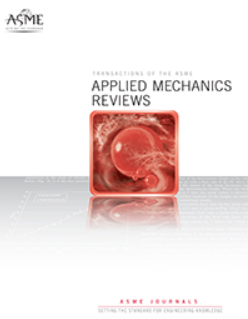A Review of Techniques for Measuring the Biot Coefficient and Other Effective Stress Parameters for Fluid-Saturated Rocks
IF 16.1
1区 工程技术
Q1 MECHANICS
引用次数: 5
Abstract
Predicting the behavior of a saturated rock with variations in pore fluid pressure during geo-energy production and storage, deep geological disposal of nuclear wastes, etc. is carried out using the isothermal theory of poroelasticity that incorporates Biot's effective stress principle. Several experimental methods for determining Biot's effective stress parameter have been documented in the literature. The original definition of Biot's effective stress is constantly being extended to account for non-linear and inelastic behavior of the rock. The objective of this study is to review the fundamentals of the original experimental approach for determining Biot's coefficient and other developments, their advantages and disadvantages, and include several case studies. Current techniques are based on different premises: jacketed and unjacketed bulk moduli or compressibility values; volume changes of the bulk and pore fluid from a drained triaxial test on a saturated sample; isotropic-isochoric compression tests on a saturated sample; matching volumetric strains or failure envelopes for dry and saturated samples; variations of rock properties, such as volumetric strain, permeability, compressional and shear wave velocities, with respect to confining stress and pore pressure; estimation of the Biot coefficient from other poroelastic parameters; and approximation of the dry bulk modulus or unjacketed bulk modulus of the rock from mineralogical compositions or ultrasonic wave velocities. This article discusses variations in Biot's effective stress coefficients produced using the different techniques and how factors such as pore geometry, test conditions, stress path, and test temperature affect the Biot's coefficient.饱和流体岩石Biot系数及其他有效应力参数测量技术综述
利用结合Biot有效应力原理的孔隙弹性等温理论,预测了饱和岩石在地能源生产和储存、核废料深层地质处置等过程中孔隙流体压力变化的行为。几种确定Biot有效应力参数的实验方法已在文献中记录。为了考虑岩石的非线性和非弹性特性,Biot有效应力的原始定义不断得到扩展。本研究的目的是回顾确定Biot系数的原始实验方法的基本原理和其他发展,它们的优点和缺点,并包括几个案例研究。目前的技术基于不同的前提:夹套和非夹套的体积模量或压缩性值;饱和试样排水三轴试验中体积和孔隙流体的体积变化饱和试样的各向同性等时压缩试验匹配干燥和饱和样品的体积应变或失效包络;岩石性质的变化,如体积应变、渗透率、纵波和横波速度,相对于围应力和孔隙压力;从其他孔隙弹性参数估计Biot系数;并根据矿物成分或超声波波速近似计算岩石的干体模量或无夹套体模量。本文讨论了使用不同技术产生的Biot有效应力系数的变化,以及孔隙几何形状、测试条件、应力路径和测试温度等因素如何影响Biot系数。
本文章由计算机程序翻译,如有差异,请以英文原文为准。
求助全文
约1分钟内获得全文
求助全文
来源期刊
CiteScore
28.20
自引率
0.70%
发文量
13
审稿时长
>12 weeks
期刊介绍:
Applied Mechanics Reviews (AMR) is an international review journal that serves as a premier venue for dissemination of material across all subdisciplines of applied mechanics and engineering science, including fluid and solid mechanics, heat transfer, dynamics and vibration, and applications.AMR provides an archival repository for state-of-the-art and retrospective survey articles and reviews of research areas and curricular developments. The journal invites commentary on research and education policy in different countries. The journal also invites original tutorial and educational material in applied mechanics targeting non-specialist audiences, including undergraduate and K-12 students.

 求助内容:
求助内容: 应助结果提醒方式:
应助结果提醒方式:


